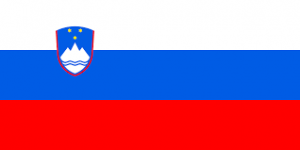Difference between revisions of "Language/Slovenian/Grammar/Singular-and-Plural-Nouns"
m (Quick edit) |
m (Quick edit) |
||
| Line 190: | Line 190: | ||
<span gpt></span> <span model=gpt-3.5-turbo></span> <span temperature=1></span> | <span gpt></span> <span model=gpt-3.5-turbo></span> <span temperature=1></span> | ||
==Related Lessons== | |||
* [[Language/Slovenian/Grammar/Conjugation-of-verbs-in-the-present-tense|Conjugation of verbs in the present tense]] | |||
* [[Language/Slovenian/Grammar/Adverbs|Adverbs]] | |||
* [[Language/Slovenian/Grammar/Conjugation|Conjugation]] | |||
* [[Language/Slovenian/Grammar/Adverbs-and-prepositions|Adverbs and prepositions]] | |||
* [[Language/Slovenian/Grammar/Nouns,-articles-and-gender|Nouns, articles and gender]] | |||
* [[Language/Slovenian/Grammar/Past-Tense|Past Tense]] | |||
* [[Language/Slovenian/Grammar/Pronouns-and-their-use|Pronouns and their use]] | |||
* [[Language/Slovenian/Grammar/Conjugation-of-verbs-in-the-past-tense|Conjugation of verbs in the past tense]] | |||
* [[Language/Slovenian/Grammar/Questions|Questions]] | |||
* [[Language/Slovenian/Grammar/The-subjunctive-mood-and-modal-verbs|The subjunctive mood and modal verbs]] | |||
{{Slovenian-Page-Bottom}} | {{Slovenian-Page-Bottom}} | ||
Revision as of 20:42, 22 March 2023
Introduction
In Slovenian grammar, nouns refer to people, places, things, or ideas, while pronouns are used to replace nouns to avoid repetition in sentences. In this lesson, we will focus on the formation of singular and plural nouns in Slovenian, including regular and irregular plural forms.
The Formation of Singular Nouns
In Slovenian, the singular form of a noun is usually formed by adding a suffix to the root word. The most common noun suffixes are:
| Suffix | Usage | Example |
|---|---|---|
| -a | Used for feminine singular nouns ending in a consonant, -c, -k, -g, -h, -j, -o, -s, -š, -t, -x, or -z. | hiš<a style="font-family: Arial, sans-serif;font-size: 90%;">a</a> (house), knjiž<a style="font-family: Arial, sans-serif;font-size: 90%;">a</a> (book) |
| -o | Used for neuter singular nouns ending in a consonant, -c, -k, -g, -h, -j, -s, -š, -t, -x, or -z. | pism<a style="font-family: Arial, sans-serif;font-size: 90%;">o</a> (letter), drev<a style="font-family: Arial, sans-serif;font-size: 90%;">o</a> (tree) |
| -e | Used for masculine singular nouns ending in a consonant, -c, -k, -g, -h, -j, -o, -s, -š, -t, -x, or -z. Also used for some feminine nouns. | moški (man), mize (table) |
| -i/-j | Used for masculine singular nouns ending in -a, and some feminine singular nouns ending in a vowel. | stoli/j (chair), roki/j (hand) |
Note: There are many exceptions to these rules, so it's important to learn the singular forms of nouns as you encounter them.
Here are some examples of singular nouns in Slovenian:
| Singular Nouns | English Translation |
|---|---|
| pes | dog |
| knjiga | book |
| vlak | train |
| sladkor | sugar |
| mama | mother |
The Formation of Plural Nouns
In Slovenian, there are two types of plural nouns: regular and irregular. Regular plural nouns are formed by adding a suffix to the root word, while irregular plural nouns have unique forms.
Regular Plural Nouns
The most common way to form regular plural nouns in Slovenian is to add -i/-ji or -e to the singular form of the word. Here are the general rules:
| Singular form ending | Regular plural form ending | Example |
|---|---|---|
| -a | -e | knjig<a style="font-family: Arial, sans-serif;font-size: 90%;">e</a> (books) |
| -o | -a | lista (leaves) |
| -e/-i | -i/-ji | prijatelji/j (friends) |
Note: Nouns ending in -ij are usually formed by adding -i to the singular form.
Here are some examples of regular plural nouns in Slovenian:
| Singular Noun | Plural Noun | English Translation |
|---|---|---|
| pes | psi | dogs |
| knjiga | knjige | books |
| prijatelj | prijatelji | friends |
| list | lista | leaves |
Irregular Plural Nouns
Some Slovenian nouns have unique forms for the plural that do not follow the regular plural formation rules. Here are some examples:
| Singular Noun | Plural Noun | English Translation |
|---|---|---|
| kruh | kruhi | loaves of bread |
| računalo | računalniki | computers |
| noga | noge | legs |
| krv | krvi | blood |
Note: It's important to learn the plural forms of nouns as you encounter them.
Conclusion
In this lesson, we learned about the formation of singular and plural nouns in Slovenian, including regular and irregular plural forms. Remember that there are many exceptions to the rules, so it's important to learn the plural forms of nouns as you encounter them. In the next lesson, we will focus on personal pronouns in Slovenian.
Related Lessons
- Conjugation of verbs in the present tense
- Adverbs
- Conjugation
- Adverbs and prepositions
- Nouns, articles and gender
- Past Tense
- Pronouns and their use
- Conjugation of verbs in the past tense
- Questions
- The subjunctive mood and modal verbs
